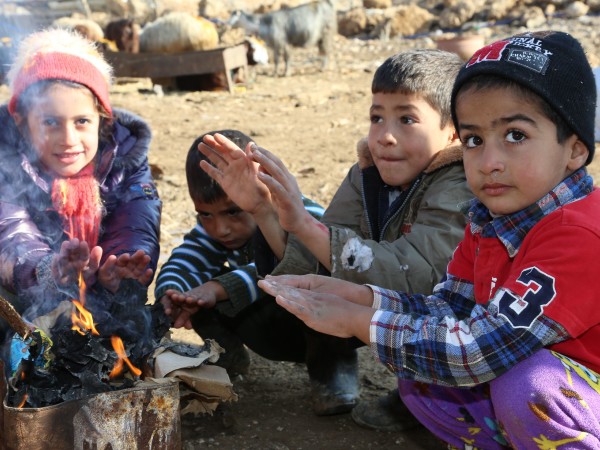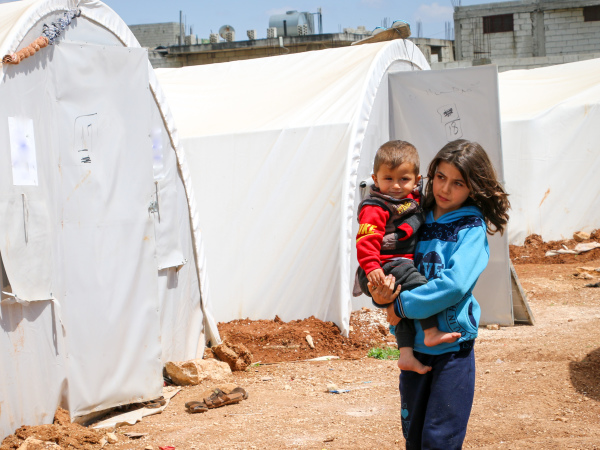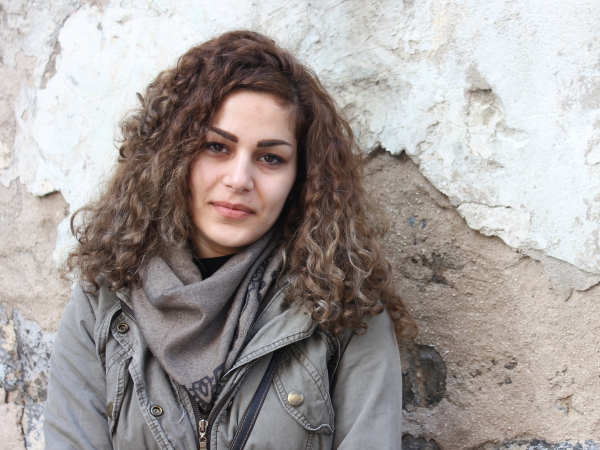The conflict in Ukraine is all too familiar for Syrians
15 March 2022

Written by Hombeline Dulière, SCIAF and CAFOD’s Syria Crisis Programme Manager
This piece was originally published by the Independent
The terrible stories we hear, watch and read about in Ukraine and from neighbouring countries sadly resonate with those of Syrians whose lives have been shattered by a conflict that is now entering its 12th year.
In Homs and Aleppo, I have witnessed what the total devastation of a city means. From the rooftop of a building, as far as I can see, the landscape is full of buildings that have been ripped apart, some down to the ground. Walking through the neighbourhood, I struggle to imagine how many people have been killed by bombs and shelling, or trapped under collapsed buildings, how many parents have been forced to leave everything behind to save themselves and their children from indiscriminate bombardment.
While the number of Ukrainians who have fled abroad is currently around 2.2 million, 6.6 million Syrians have left their country since the beginning of the conflict. A further 6.7 million have been internally displaced within Syria since 2011. It is the largest forced displacement crisis in the world, accounting for 25 per cent of the global refugee population.
As we watch what is happening in Ukraine, there may be many things to learn from Syria, such as helping neighbouring countries to cope with the influx of refugees, understanding that they may be displaced for a long time, and not forcing them to return home.
I have seen how strong the urge to rebuild can be, even in the midst of devastation. In Homs I met Tarek,* who was helped by SCIAF’s local partner to revive the family business, making bags and shoes. He now has eight employees and is teaching his trade to his four children. His hope for the future? “To rehabilitate my home.”
It was the same for Mohammad, a father of five, who returned to his house as soon as he could, despite the damage and the looting. “There was nothing left when I came back,” he told me. “Everything had been stolen. But at least it was not completely razed to the ground.” In spite of everything, Mohammad has faith in the future. “I hope that my children will have a better life than mine,” he said. That will resonate with parents everywhere.

So will the words of Rima who, like Mohammad, was helped by SCIAF’s partner to rehabilitate what was left of her home. A widow with six children and a mother-in-law to look after, she had nowhere to go, despite daily shelling. Even when her house was rat-infested and open to the elements, the family had no choice but to find a slightly less damaged dwelling nearby. A year after returning home, she said: “Providing safety and security to my children is what matters the most to me.”
Unfortunately, other families cannot go back home, because it’s not safe. The armed conflict in Syria continues to cause death, destruction, and displacement, and civilian infrastructures are targeted in violation of international humanitarian law. So many are still living in makeshift tents in Syria or in neighbouring countries, vulnerable to bad weather, lacking basic services including water, sanitation and healthcare. Others risk their lives to cross seas and borders, seeking refuge in a country at peace.
As the conflict grinds on for a twelfth year, those who have suffered most include children like Fatima, who has never been to school because of the conflict. She was four when the war started and only now, aged 15, is she receiving literacy classes in Arabic, maths, science, English and geography. Having passed the first level, her dream is to go to university. But Fatima is the only one of her family’s nine children who is studying. “I want to become a teacher for those who don’t know how to read,” she said.
Those fleeing Ukraine will be wondering how long it will be before they can go home. The principle is that returns by refugees should be safe, voluntary and on an informed basis, and at present conditions in much of Syria do not allow for this. Donor countries and the UNHCR need to make sure that the situation is properly monitored, and that nobody is forced back against their will. They should also take a stand against the increasing number of forced deportations of Syrian refugees.
How many more families, in Syria as in Ukraine, will have to leave their homes to save their lives? How many more parents will lose a child under the shelling? How many more will become orphans because of war?
While countries in Europe are generously opening their borders to Ukrainians escaping war, they should keep them open to all civilians seeking protection. Wherever they are from, they have the right to seek asylum and be protected without discrimination on the grounds of race, religion or country of origin, according to the Refugee Convention.
*All names have been changed.

Ten years on, the Syrian civil war is showing no signs of abating and is causing unimaginable suffering.

We are calling on Scots to remember Syrians whose lives have been torn apart by the brutal war.

Fadia, along with a group of dedicated women, is committed to rewriting Syria’s one-dimensional narrative of war and pain.